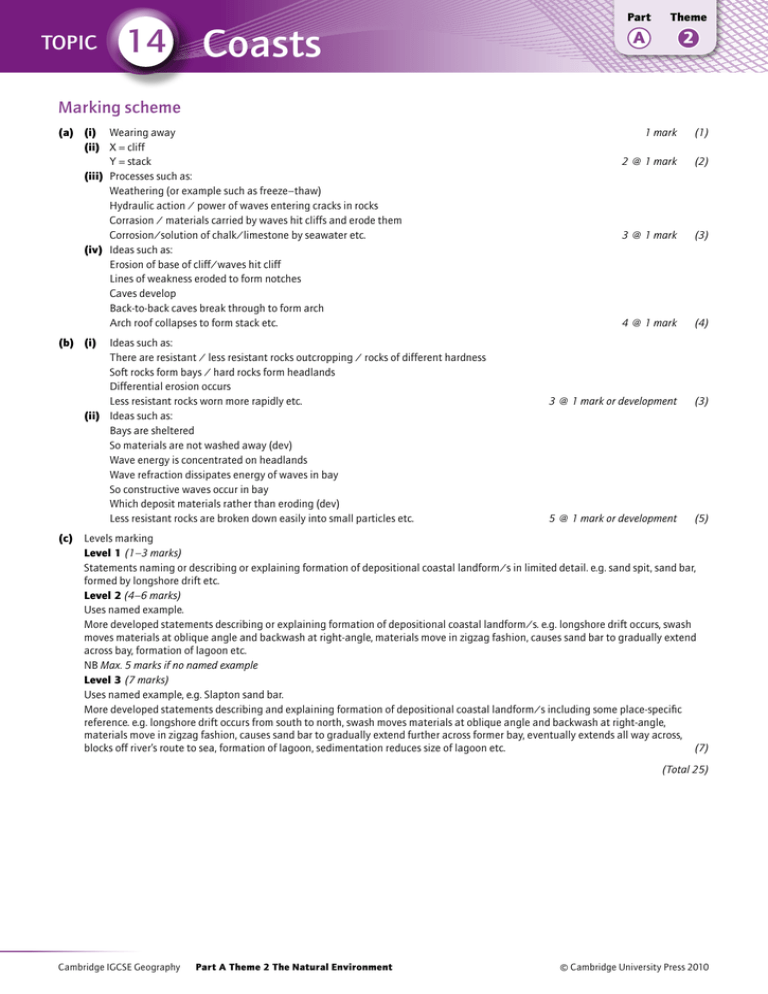Mark scheme - Geography LWC
advertisement

Topic 14 Coasts Part Theme A 2 Marking scheme (a) (i) Wearing away (ii) X = cliff Y = stack (iii) Processes such as: Weathering (or example such as freeze–thaw) Hydraulic action / power of waves entering cracks in rocks Corrasion / materials carried by waves hit cliffs and erode them Corrosion/solution of chalk/limestone by seawater etc. (iv) Ideas such as: Erosion of base of cliff/waves hit cliff Lines of weakness eroded to form notches Caves develop Back-to-back caves break through to form arch Arch roof collapses to form stack etc. (b) (i) (ii) Ideas such as: There are resistant / less resistant rocks outcropping / rocks of different hardness Soft rocks form bays / hard rocks form headlands Differential erosion occurs Less resistant rocks worn more rapidly etc. Ideas such as: Bays are sheltered So materials are not washed away (dev) Wave energy is concentrated on headlands Wave refraction dissipates energy of waves in bay So constructive waves occur in bay Which deposit materials rather than eroding (dev) Less resistant rocks are broken down easily into small particles etc. 1 mark (1) 2 @ 1 mark (2) 3 @ 1 mark (3) 4 @ 1 mark (4) 3 @ 1 mark or development (3) 5 @ 1 mark or development (5) (c) Levels marking Level 1 (1–3 marks) Statements naming or describing or explaining formation of depositional coastal landform/s in limited detail. e.g. sand spit, sand bar, formed by longshore drift etc. Level 2 (4–6 marks) Uses named example. More developed statements describing or explaining formation of depositional coastal landform/s. e.g. longshore drift occurs, swash moves materials at oblique angle and backwash at right-angle, materials move in zigzag fashion, causes sand bar to gradually extend across bay, formation of lagoon etc. NB Max. 5 marks if no named example Level 3 (7 marks) Uses named example, e.g. Slapton sand bar. More developed statements describing and explaining formation of depositional coastal landform/s including some place-specific reference. e.g. longshore drift occurs from south to north, swash moves materials at oblique angle and backwash at right-angle, materials move in zigzag fashion, causes sand bar to gradually extend further across former bay, eventually extends all way across, blocks off river’s route to sea, formation of lagoon, sedimentation reduces size of lagoon etc. (7) Cambridge IGCSE Geography Part A Theme 2 The Natural Environment (Total 25) © Cambridge University Press 2010

